Following this because………..same thinking. I love the FPV experience but it can be expensive.
Will give you another perspective besides DJI's own FPV drone models... I'm thinking, as I know that you have already dipped your toes into the FPV quad world with your Cetus X kit, perhaps you're a bit more open minded. (All others are also welcome for a second thought of course)
The initial investment will not necessarily be cheaper... but you will not end up stuck into a expensive DJI closed model accessory eco-system, instead you will be able to use most of all accessories you initial buy for later FPV models you might feel that you also want to have alongside with the first.
Many think that it's only DJI's own FPV models that can provide that integrated smooth startup where all thing's needed are adapted to work together & that you need to have soldering, tinkering & tuning skills to even think about something else than the DJI
Avata or the FPV drone... luckily those needed skills belongs to the past, Bind & Fly quads of today are equally easy to setup & get flying as the 2 from DJI.
Both routes will share some equipment & will be based on the same DJI technology which will provide very much the same features... this as both use the same
goggles, can use the same radio controller (besides the motion controller) & have the same video and transmission system.
What differs is that the
Avata & the
DJI FPV drone have access to a more thorough set of "support wheels" with a more refined RTH function (refined as in... the DJI variants lands, the other route (if a GPS chip is chosen when buying the model) doesn't, it just returns it so a lost connection can be re-established... but the landing part is on it's way in the next firmware version, Betaflight 4.4)... & the 2 DJI variants can also act as ordinary GPS stabilized "photo drones" with both horizontal & altitude hold.
The alternative route also have some degree of "support wheels" though... I'm certain that you know that your Cetus X have both Angle & Horizon mode besides full manual, nice for a newbie as release of sticks returns the quad leveled with the horizon & the sticks work as on a photo drone, but no altitude hold though... manual throttle management are needed. What differs between the Angle & Horizon mode is that Angle only allows tilt to a set angle (like a photo drone) but the Horizon mode will allow flips & rolls but always returns automatically leveled with the horizon. And as said, it have a simpler RTH without the actual landing but that will soon be there also.
So if you feel that a photo drone is a photo drone... mainly aimed to be a camera on a flying tripod, providing all a high end camera does but is a bit meh regarding the flying capabilities... and you're fine with having that explicitly for the more serious photo tasks... and are prepared to have a quad also for the top of the line flying capabilities... then why try to combine a "Family Van with the latest Lamborghini"?
This is the alternative to the
Avata &
DJI FPV drone ...
Either of these
goggles... both are the same as shipped with the
Avata. The first model works right now with the
Avata, the
DJI FPV drone & all DJI airunits, both the newest O3 & the older Vistas & airunits. The second pair only works with the
Avata & the new DJI airunit O3.
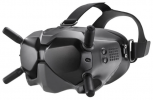

Then a radio controller ... the first is the same as for the
Avata, the
DJI FPV drone & also works with the standalone DJI airunit O3, this doesn't work with anything else. The second one is just a representation... you mainly have dozens of different radios to chose among, just decide your price level & transmission protocol.
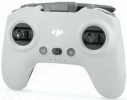
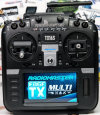
If going with the ELRS transmission protocol (which is the best today...) & order a BNF quad with a ELRS receiver you can even use your Cetus X controller which is ELRS.
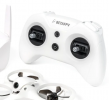
After the
Goggles, Controller (& possibly Transmission protocol if not going with DJI's radio) choice it's time to choose the quad...
Want unprecedented speed, power & durability good for nearly any type of flying besides in really confined indoor environments... go for a 5"
For instance a iFlight Nazgul Evoque, since a couple days ago adapted for & including the new DJI airunit O3.
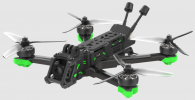
Or if you want something similar to the DJI
Avata... go for a GEPRC Cinelog30, also now with the newest O3 airunit. Better for slower cruising flights, maybe possible even indoors in larger spaces if skilled & have prop guards.
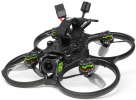
Or if interested in mountain surfing, cinematic high speed cruising & long range needing loads of carrying capacity for large batteries & external HD cameras... maybe for instance a 6" or 7"
For instance a iFlight 6" BOB57
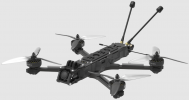
...or a 7" iFlight Chimera 7 Pro

Additional to
Goggles, controller & quad you need a charger... this excellent one for instance, Hota D6 Pro, add in 2 four spot balance boards & you can parallell charge 8 batteries.
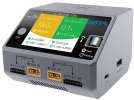
And battery packs... as many as you can afford (they are much much cheaper than the DJI ones). Either you have chosen a 4S (4 cell battery) quad or a 6S (6 cell battery). For instance... all above quad models have both variants ... if going with the same cell count versions the chance increases that the same battery can be used in several models.
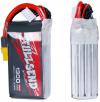
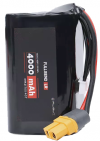
For instance, if going with a 1400mAh 6S battery it can be used in all above models ... but that capacity (a weight) is best suited for the 5" ... the Cinelog30 can use the same but would be a bit snappier with a tad lighter battery, like a 1100mAh 6S. The 2 large 6 & 7" examples can again use the same battery ... but as the intention is long range cruising & they can carry weight I would go with a battery capacity that gives the flight time I want ... maybe go with a 6S LiIon pack on 4000mAh.
That's it ... BNF Quads with the new DJI airunit O3 with the DJI controller &
goggles will bind together exactly as all included in a DJI
Avata kit (it's the same gear after all), just update all 3 thing's with DJI Assistant for FPV, set all 3 in binding mode & after a couple seconds all 3 beeps as a confirmation & you can fly.
So why go this route..?
Compare accessory prices... like batteries, props, frame parts like arms & screws
Durability... you really need to try hard to brake anything, and if something actually breaks all is very easy to DIY repair if needed.
Cross model use of cheap batteries & other accessories
If a new model comes, buy it & reuse all gear you already have... This isn't like DJI redesigning everything to NOT fit between models.
Freedom to chose the radio controller that suits you best both ergonomically & transmission protocol wise & being able to maybe reuse something you might already have for other flying hobbies?
Have all choices regarding which flying characteristic you want... slow & safe, fast & powerful, load carrying, cinematic & long range... you chose one initially & over time you end up with all, it's up to you.























